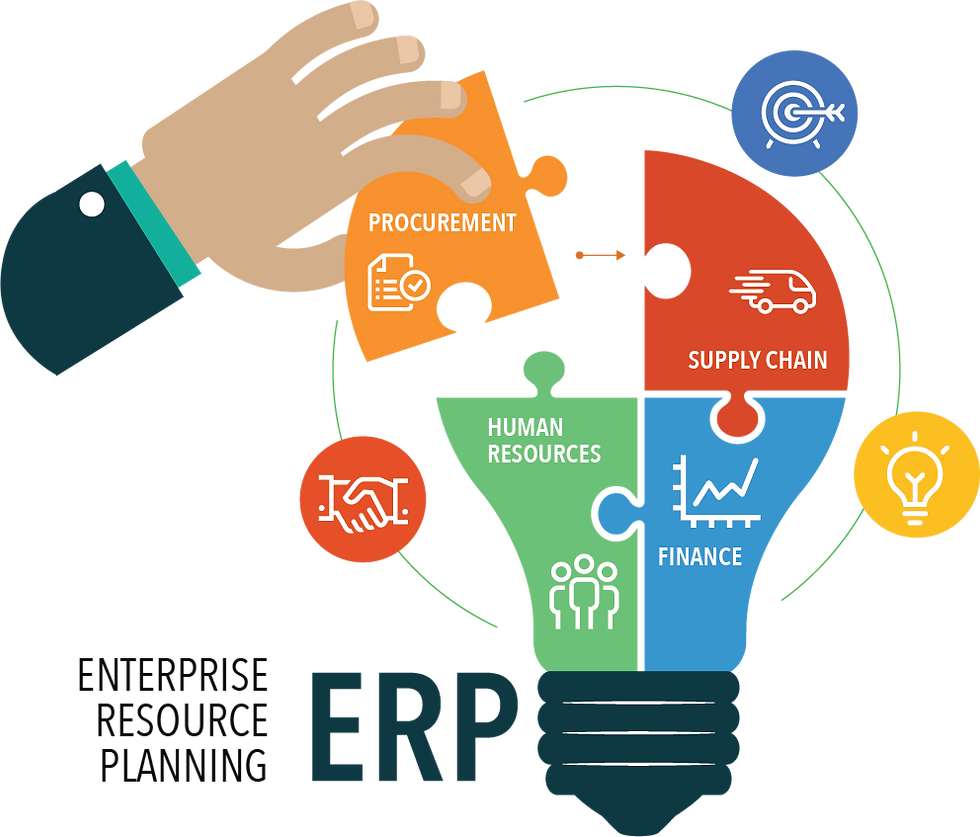Enhancing Educational Management with ERP Software: A Comprehensive Guide for Institutes
- solutionscakiweb
- Nov 24, 2023
- 2 min read
Introduction
In recent years, Educational Resource Planning (ERP) software has revolutionized the management systems in educational institutes worldwide. These platforms offer a centralized solution to streamline various administrative tasks, academic processes, and communication channels within educational institutions. From managing student information to automating financial operations, ERP systems have become integral tools for enhancing efficiency, data accuracy, and decision-making capabilities in educational settings.
Understanding ERP Software in Educational Institutes
ERP software for educational institutes is a comprehensive integrated platform designed to manage diverse aspects of institutional operations. It encompasses modules for student information management, admissions, academic planning, faculty management, finance, human resources, library management, and more. The primary goal is to create a unified system that connects various departments and stakeholders, facilitating seamless information flow and data accessibility.

Key Features and Benefits of ERP Software for Educational Institutes
Student Information Management:
Centralized database for student records, including personal information, academic history, attendance, and performance evaluations.
Simplified admission processes, allowing online applications, document submissions, and automated admission status updates.
Monitoring student progress through intuitive dashboards and reports accessible to administrators, faculty, and parents.
Academic Planning and Management:
Course scheduling and timetable management, optimizing resource allocation and classroom utilization.
Curriculum management tools to design, update, and track course outlines, lesson plans, and learning materials.
Integration with Learning Management Systems (LMS) for seamless delivery of course content and assessments.
Faculty and Staff Management:
Database management of faculty profiles, qualifications, teaching assignments, and performance evaluations.
Automation of payroll processing, leave management, and performance appraisals for staff.
Collaboration tools for communication among faculty members and administration.
Financial Management:
Budget planning, tracking expenditures, and generating financial reports for transparent financial management.
Fee collection, invoicing, and online payment integration, enhancing convenience for students and parents.
Integration with accounting systems for efficient bookkeeping and auditing.
Library Management:
Cataloging of library resources, managing book circulation, and tracking overdue items.
Online catalog search, reservation, and renewal of library materials for students and faculty.
Analytics to assess library usage patterns and optimize resource allocation.
Implementation Considerations and Best Practices
Needs Assessment:
Conduct a thorough analysis of the institute’s requirements to identify key areas for improvement and customization needs.
Vendor Selection:
Evaluate ERP software vendors based on features, scalability, support, and implementation costs.
Consider user-friendly interfaces and customization options tailored to educational settings.
Customization and Integration:
Customize the ERP system to align with the institute’s workflows and requirements.
Ensure seamless integration with existing systems, such as LMS, accounting software, and communication tools.
Training and Change Management:
Provide comprehensive training to staff and faculty to maximize system utilization.
Implement change management strategies to ease the transition and encourage adoption among stakeholders.
Continuous Evaluation and Upgrades:
Regularly assess the ERP system's performance, gather feedback, and implement necessary upgrades or modifications to meet evolving needs.
Challenges and Future Trends
While ERP software offers numerous advantages, implementing and maintaining such systems in educational institutes may face challenges such as initial costs, data security concerns, and resistance to change among stakeholders. However, the future of ERP in education is promising, with trends focusing on cloud-based solutions, artificial intelligence-driven analytics for predictive insights, enhanced mobile capabilities for accessibility, and increased emphasis on data security measures.
Conclusion
ERP software has emerged as a powerful tool for educational institutes seeking to streamline operations, improve efficiency, and enhance the overall learning experience. By integrating disparate processes into a unified platform, institutes can achieve greater transparency, data accuracy, and decision-making capabilities. With careful planning, implementation, and continuous evaluation, ERP systems can revolutionize educational management, empowering institutes to focus more on educational excellence and student success.



Comments